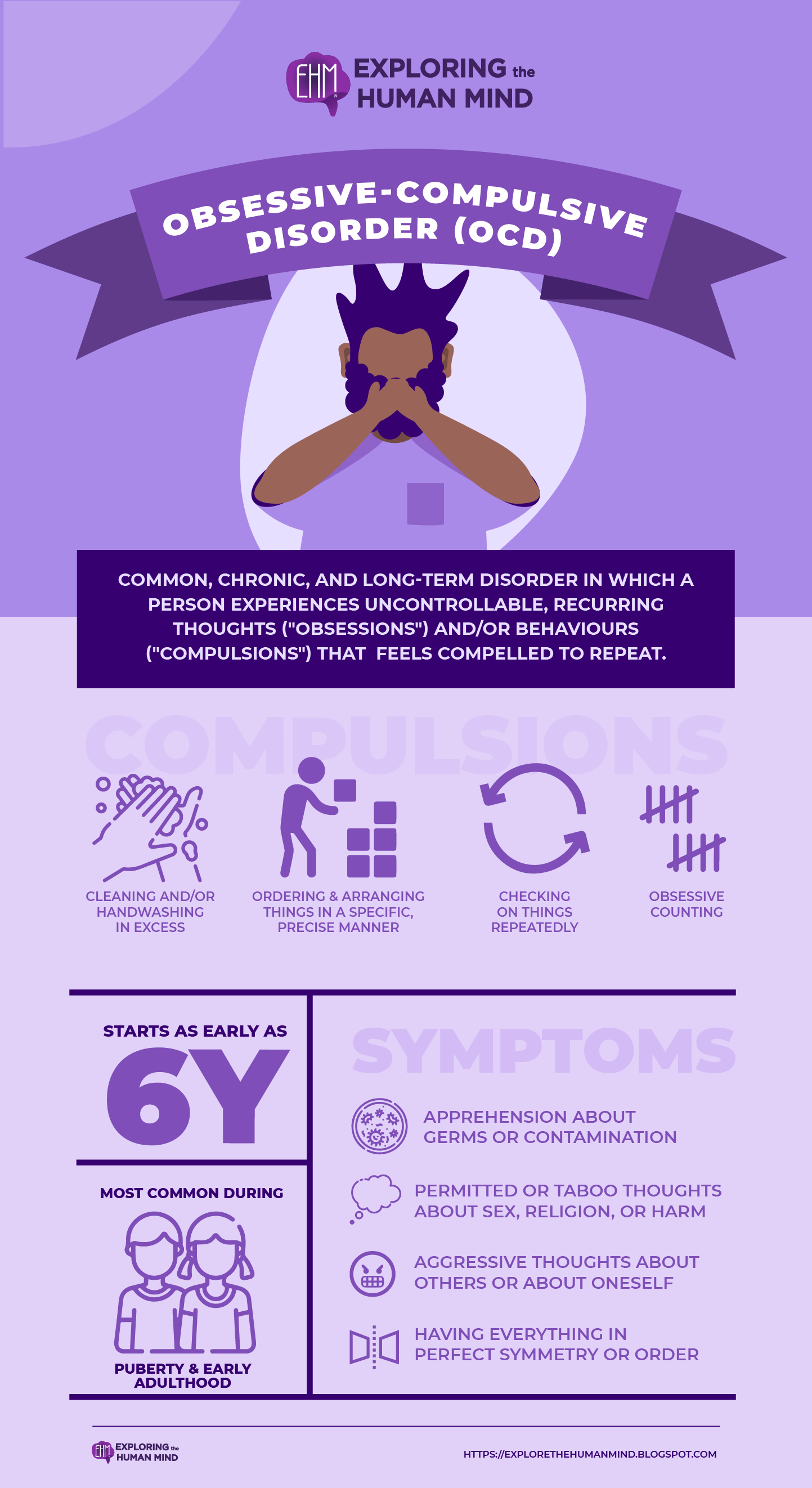Obsessive-Compulsive Disorder
OCD can affect both men and women, as well as children. People can experience symptoms as early as 6 years old, but they are most common during puberty and early adulthood. OCD can be distressing and interfere with your life significantly, but treatment can help you keep it under control.
Obsessive thoughts and compulsive behaviors are common in people who have OCD. An obsession is a disturbing and unpleasant thought, image, or urge that enters your mind on a regular basis, causing feelings of anxiety, disgust, or unease.
Symptoms
Typical symptoms include:- Apprehension about germs or contamination
- Permitted or taboo thoughts about sex, religion, or harm
- Aggressive thoughts about others or about oneself
- Having everything in perfect symmetry or order
A compulsion is a repetitive behavior or mental act that you believe you must perform in order to temporarily alleviate the unpleasant feelings caused by the obsessive thought. Compulsions that are common include:
- Cleaning and/or handwashing in excess
- Ordering and arranging things in a specific, precise manner
- Checking on things repeatedly, such as checking to see if the door is locked or the oven is turned off
- Obsessive counting

vectors by Freepick; graphic design by Vadot
Causes
It is unknown what causes OCD. A variety of factors may be at play, including:
- A family history of OCD increases your chances of developing it. It could be learned behavior or a result of your genes.
- Differences in the brain - some people with OCD have unusually high activity in their brains or low levels of a chemical called serotonin.
- OCD is more common in people who have been bullied, abused, or neglected, and it can begin after a major life event such as childbirth or bereavement.
- Personality - neat, meticulous, methodical people with high personal standards, as well as people who are generally quite anxious or have a strong sense of responsibility for themselves and others, are more likely to develop OCD.
Some people with OCD also have tic disorders. Motor tics are sudden, brief, repetitive movements such as blinking and other eye movements, grimacing, shrugging, and jerking of the head or shoulders. Repetitive throat clearing, sniffing, or grunting sounds are examples of common vocal tics.
OCD Types and Symptoms
OCD manifests itself in a variety of ways, but the majority of cases fall into one of four broad categories:
- Checking locks, alarm systems, ovens, or light switches, or suspecting a medical condition such as pregnancy or schizophrenia.
- Contamination, a fear of dirty things, or an obsession with cleaning (also known as "obsessive cleanliness disorder"). Mental contamination is the sensation of being treated as if you were dirt.
- The need to have things lined up in a certain way, as well as symmetry and order.
- Ruminations and intrusive thoughts, a fixation on a particular line of thought. Some of these ideas may be violent or disturbing.
Reference:
Obsessive-Compulsive Disorder. (2018). National Institute of Mental Health (NIMH). https://www.nimh.nih.gov/health/topics/obsessive-compulsive-disorder-ocd#:~:text=Obsessive%2Dcompulsive%20disorder%20(OCD),to%20repeat%20over%20and%20over.
NHS Choices. (2023). Overview - Obsessive compulsive disorder (OCD). https://www.nhs.uk/mental-health/conditions/obsessive-compulsive-disorder-ocd/overview/
Fields, L. (2003, February 6). Obsessive-Compulsive Disorder (OCD). WebMD; WebMD. https://www.webmd.com/mental-health/obsessive-compulsive-disorder






Comments
Post a Comment